Common Sorrel
The name ‘common’ really does describe this plant and we can usually find it in any grass type environment at any time of year save a very harsh winter or a drought over summer. See Other Facts below before consumption.
| Hedgerow Type | |
| Common Names | Common Sorrel, Garden Sorrel, Narrow Leaved Dock, Spinach Dock |
| Scientific Name | Rumex acetosa |
| Season Start | Jan |
| Season End | Dec |
Leaves
The leaves can be long and arrow shaped or when young, shorter and more rounded but at the base of the leaf it always has pointed ‘tails’ which is a key identifying feature of this plant. The leaves have a shiny appearance and are usually green but can develop red features.
Possible Confusion
The leaves are very similar to Meadow Bindweed (in the photo) but this is a sprawling plant that grows along the ground or climbing through grasses. The leaves of Meadow Bindweed grow in spiral around the stem and it has white petaled flowers. Sorrel grows as a rosette and the flowers are small, round and red/green/yellow.
Large mature sorrel leaves can look a bit like young Lords & Ladies leaves. The sharply pointed “tails” (lobes) of sorrel leaves distinguish it from the rounded lobes of the Lords & Ladies leaves.
Taste
Sharp and citrus, described by many as like apple peel.
Frequency
Very common as the name suggests.
Collecting
Younger smaller leaves are the best for salads, all leaves can be used but the flower stem leaves can become a little bitter.
Medicinal Uses
Sorrel has diuretic properties and can be used to treat sinusitis, it was also used in the past to prevent and treat scurvy.
Other Facts
All the sorrels contain oxalic acid and should be avoided by people prone to kidney stones but with most of these things the amount of oxalic acid is tiny and oxalic acid can be found in spinach, cabbage, rhubarb, beans, coffee and chocolate, none of which has a health warning about the oxalic acid content.
Sorrel can be used as a garnish, a salad leaf, a green for a great soup, stews or as a sweet ingredient for cakes and sorbets.



 (49 votes, average: 3.29 out of 5)
(49 votes, average: 3.29 out of 5)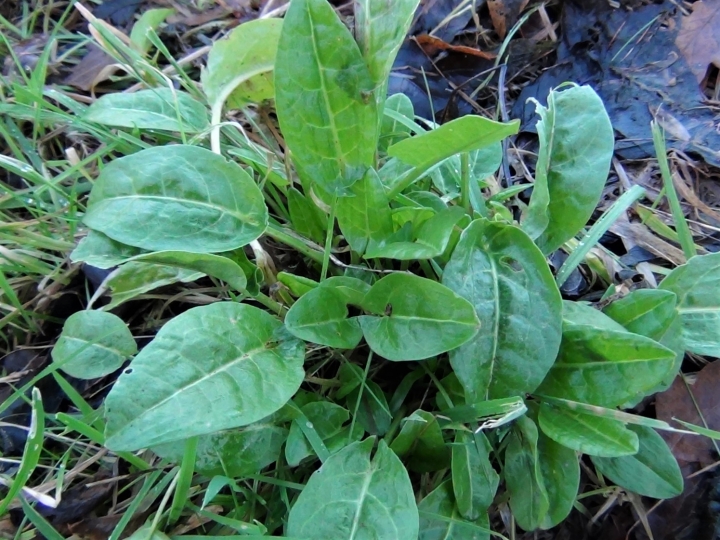
















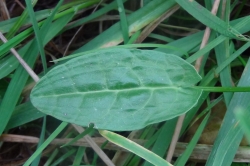
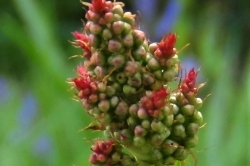
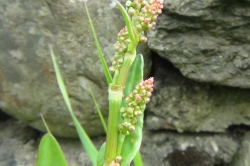
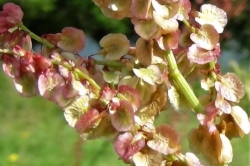

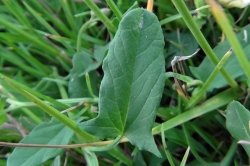





24 comments for Common Sorrel
In some countries sorrel is another name for Hibiscus.
Thank you, this was very helpful.
How do I harvest it? I have a pot with a large plant in it. Do I take leaves and dry them? How? Can it be used as a tea? Need recipes please?
I find Sorrel leaves lose their taste after drying, they are best used fresh. I haven’t made a tea with them but there is a recipe for Sorrel soup which is savoury, even with Sorrels sweet/sour taste, and delicious. I can’t remember the recipe but I found it on the internet.
If you want recipes, you can find me on Facebook (Asta Saulis) & send me a message. In Lithuania, sorrel soup is one of the National dishes. In the U.S., I sometimes replace it with spinach (with lemon juice) – my son loves it. And we preserve sorrel also for winter – usually with salt in glass jars. You can buy those at some European stores, although they tend to be a bit woody. Should try to pick young leaves, as those are better. Sorrel grows in meadows, but you can also buy seeds and grow it in your own garden – we always had it at home.
You can freeze the leaves. We use sorrel (in Hungary) as a thick soup, sauce consistency. To make it you need a lot of leaves. We tear out the sterm-part from the leaves, too to avoid “woody” bites. You wash the leaves and either make it (recipe) or you can press them into a bag and freeze them. The amount you need is like 2-3 big grapefruits when pressed because it will shrink when cooked. Heat a little fat (or oil) 1 tbs, put the leaves on it and stir, they will go a bit brown and fall apart into an almost smooth stuff, use some beef stock or chicken stock (150ml appx), pinch of salt (Hungarian stocks are salty, so you might need more salt to add), 1 tbs sugar (or more, to your taste) or otherwise it is very sour. It is ready in a couple of minutes, at the end use 100-150 ml soured cream mixed with half spoon of flour, stir it till it is smooth and no flour-knots in it, and stir it into the sorrel to make it thicker.
It is a delicious dish and known to be healthy. The original form is that people put a sunny side egg at the top of the plate of sorrel but I prefer it without it. I also prefer it when it cold but that’s just me.
You can buy seeds in the UK, we have sorrel in the garden in pots.
I’m in London, and it would be great if anyone would suggest nearby places where I could pick wild sorrel?
Wild Sorrel can be found growing in parks, fields, lawns and almost anywhere grass grows, it is very common so you should be able to find some near you although it won’t be easy to find until Spring.
Rick Stein showed a great Sorrell soup recipe from Burgundy on Saturday kitchen circa 16th Jan 2021. The French use it straight from the hedgerow as it’s impossible to buy.
Amazing, I’m yet to try it. This year I will, I’ve only been foraging for wild plants and mushrooms since last summer. But I’ve foragerd wild berries for year’s to make jams and wine. I’ll definitely have look up this episode 🙂
When I was a lot younger, I used to go walking in the country with my father, who was Ukrainian.
We used to pick sorrel from the local fields where I used to live with my parents, brothers and sister ☺️.
We used to get lots, so the parents could make a very hearty soup, using boiling bacon, diced potatoes etc beautiful 😋😋😋
Looking for name of plant, thought it was sorrel but plant I have has bright red veins. Long and narrow leaves, a Brit told me that the leaves were edible and often used in soups and salads.
I would need to see photos to be certain but sorrel can have red veins and narrow leaves. The best ID is the very pointed ‘tails’ (the base of the leaf near the stem) and an apple peel taste.
Good advice thank you. How can I apply for future foraging courses?
Check our foraging courses page and find a venue near you. If the courses are full we do have a waiting list for people who drop out, this happens quite often as people book in advance and then find they can’t attend on the day.
Hi Eric,
Greetings from a former colony, I live in California of Estados UNIDOs. I live in among the Redwoods where Sorrel can appear. What is your favorite way of using Sorrel in cooking? I am interested in making Raviolis with Sorrel and cream sauce and ? Asparagus, shrimp, or salmon.. my daughter says they grow in the Redwoods where the Trilliums come out in Spring.
The only time I cook sorrel is for soup, otherwise I think it goes well in a salad, especially with a balsamic dressing.
Does anyone know a look-a-like sorrel that’s bigger and the leaves are covered in a light fluff? I’ve been trying to research what it is, but I’m not finding any leads.
Do you have any photos?
My mother was of Hungarian decent and she always put wild sorrel chopped pieces in her potatoe soup. I miss it.
I put a little bunch of sorrel in with my tangerine tea as well as wild rose petals chamomile, honeysuckle, lemon balm, Johnny jump ups, calendula, holy basil flowers, sage and rosemary depending on what I have available.
It makes for a very beautiful and flavorful cup of tea.
I also add a half of a lemon to a 2 cup size large mug and honey to taste…yum!!! 🙂
I also will nibble wild sorrel and dandelion greens help cut the bitter taste and add a little to salads makes the flavor pop!!! 🙂
So glad for a way to utilize what I used to get upset about finding in my yard and garden thinking it was just a nasty weed.
interesting YouTube account Country Life vlog just released video called Free Food from Nature: How to keep wild sorrel fresh for years. (2 Oct 2022). Shows harvesting wild sorrel & plaiting it to dry – in Azerbaijan.
I grew up in in West Cornwall where sorrel is known as ‘sour sobs’ or ‘sour sabs’ and we used to nibble them from the hedgerows all the time. Fantastic with fresh trout. This Autumn we’re having a very good crop with some big juicy leaves 🙂
Following on from Stevyn, I grew up around Wendron and did just the same, walking the miles to and from primary school – we called it ‘sour sobs’ and ate it raw or wrapped it around nettle leaves to stop the nettle stinging our tongues. We also ate something akin to liverwort (I don’t know its name but I know what it looks and tastes like!), something akin to camomile (ditto), grasses, cob nuts, chestnuts and of course blackberries and elderberries from the hedgerows and apples, peaches, raspberries, etc. from the other side of hedgerows, as it were. We also collected field mushrooms to bring home.
I have no idea how we learned as kids what was safe to eat and what wasn’t but I guess is was just osmosis and I don’t remember anyone dying. We were well fed too, at home and at school, but grazing as you walked was just normal.